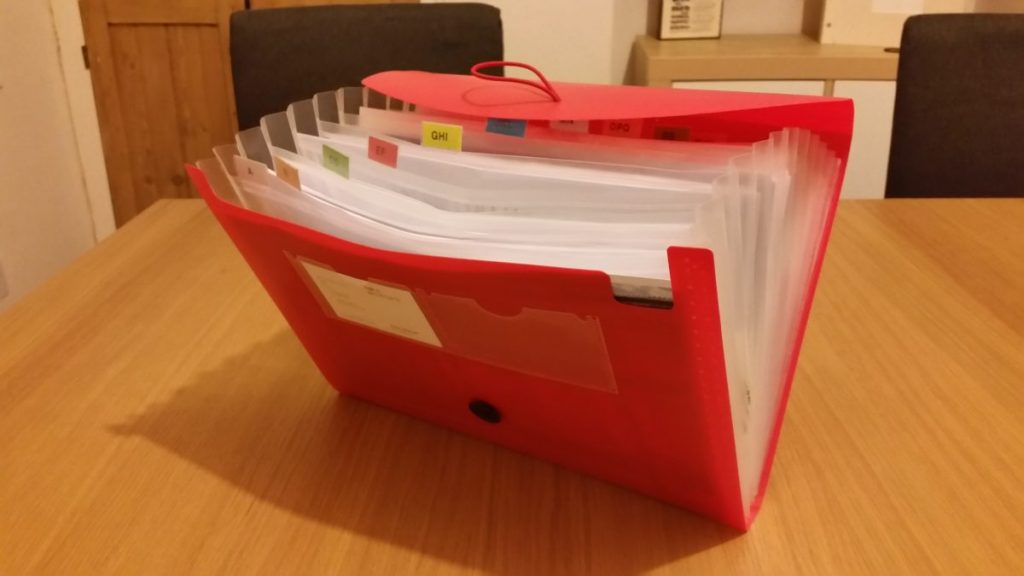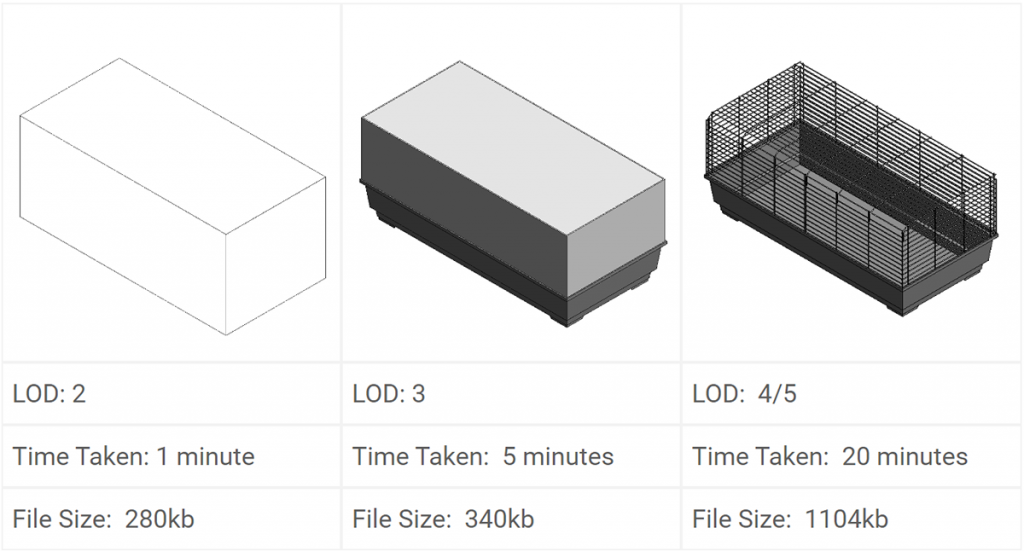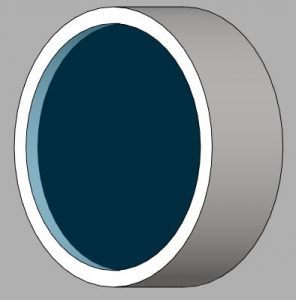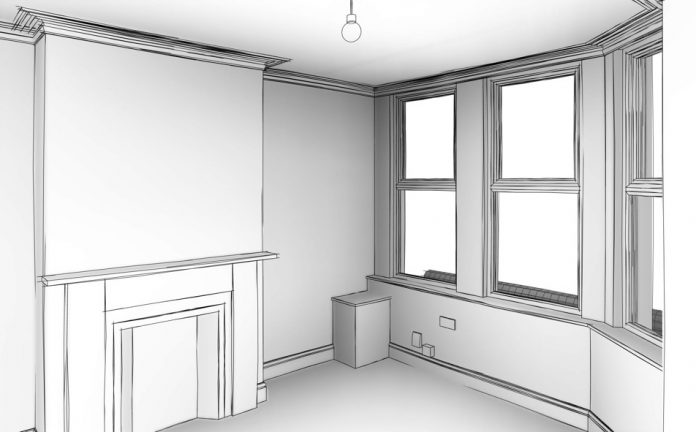Dan Rossiter of BRE explains the benefits of using BIM on smaller scale projects and provides tips based on his own experience of applying BIM to manage his home
Dan Rossiter MCIAT is a man on a mission. After listening to him speak at Ecobuild earlier this year about how he has applied BIM to his home, it became apparent that the process he has undertaken should be a lesson to anyone considering their own BIM journey.

Dan has many roles with BRE – developing and writing training courses, auditing, advising and conducting research; all of which he says comes under the category of communication. Put simply, his principal role is to “turn technical stuff into plain language for anyone to understand,” and this simple mantra has been applied to his blog, There’s no BIM like home.
Dan explained that back in 2015, he and his fiancé finally left the rental market and ventured onto the property ladder; buying a two-up two-down mid-terraced house in South Wales.
Why BIM Level 2 for a home?
Buying a house is never an inexpensive task, so it’s a natural process to want to look after it – but how? Luckily, Cardiff Council embarked on mass property surveys in the mid-nineties, so Dan had this information in addition to his own full property condition survey, land registry information, as well as EPC and FENSA certificates, but all this information was on separate bits of paper. It does seem incredible that after spending nearly £200,000, Dan didn’t get a pack with all the information neatly included for reference. Dan was a little frustrated by this and realised that he needed a better way. This is where the idea of applying BIM to his home was born.

As a Chartered Architectural Technologist, Dan has the skills to produce the required information and was keen to ensure his home was energy efficient. He had his EPC which told him that his walls needed attention. But it’s a mid-terraced, so only the front and back counted, and they were all variable thicknesses, so how was this conclusion arrived at for the EPC score? He couldn’t be sure. He was also informed that he had 250mm of loft insulation, but after checking himself, he found that wasn’t the case, so where did that information come from? The survey also said that the windows are mostly double-glazed, whereas he saw they are all double-glazed. Clearly, poor information was used which led to an inaccurate EPC result. As Dan says, it: “ultimately led to the conclusion that we had this garbage in, garbage out scenario.”
It became apparent that to get an accurate EPC score, Dan would have to find a way himself. If he could produce plans, sections, elevations and other information, he could use their details to produce his own score – he just needed the process to do it and realised the best way would be to follow the BIM Level 2 process.
Dan said that: “The BIM Level 2 process already outlined to me the ways I could achieve this goal. It directed me to certain standards and methods, how to structure my information and how to spit out good documents. If it can work for government HQs and super-prisons, maybe it would work on my two-up two-down in South Wales?”
He went on to explain that: “The idea behind BIM Level 2 is that you have a series of different outputs. There are graphical models which I could use to visualise my home (and work out all the spaces); giving me a good set of geometry to attach information to. Then I would need some form of non-graphical information; I could, for example, embed information into my model or keep external databases holding all the relevant information to be relied upon later.
“Capturing good information ultimately helped to spit out good documentation, meaning that through this process I could create new outputs as a result.”
The information Dan now has means that he can produce floor plans, elevations and sections instantly from the graphical model. He’s creating useful information out of this process and explained that: “If I want to know something, it’s in the information. I have everything I need to manage my home in a better, more efficient way.”
Sharing the knowledge
The big idea for Dan was the realisation that what he’d done could be shared. He said: “It’s all good doing it for me, but why don’t I share it? After deciding to share my journey, what I didn’t want was for this to be a Blue Peter scenario where I could pull out a brand new completed model from under the desk. I wanted to show the pain and the success, so I created a blog called bimblog.house – There’s no BIM like home.

“Last year, I wrote weekly posts talking about it, even showing mistakes and shared half-finished graphical models. Everything can be downloaded including all the Revit and IFC files, COBie outputs, as well as my Employer’s Information Requirements (EIR) and BIM Execution Plan – all in usable, readable formats so anyone can copy bits and even chop and change it. It’s completely transparent.
“The idea was to create information that I could use, and for it be of use. I didn’t want to do anything just for the sake of it. I’m not sticking hinges and screws into the graphical model just so that it looks detailed; I don’t need them. All I need is good information and low Level of Detail. I’m just putting in what I need to manage my home, and that way the graphical model stays lean and efficient.”

Dan went on to explain that: “I also wanted to show that I could do the BIM Level 2 process. We at BRE do a lot of writing and delivering presentations, training and auditing, but to be frank, while I was in practice I’d only ever done BIM in bits. This was a beautiful opportunity for me to prove that BIM works and that I was capable of doing it. In fact, even the authors of many of the BIM standards have read the blog and are happy with what I’ve done.”
Dan received the best endorsement possible from Nick Nisbet, Director, AEC3 and Vice-chair, buildingSMART UK & Ireland who provided a testimonial on how he’d done COBie by stating that: “Avoiding all stereotypes, Dan’s Welshness hasn’t stopped him to bring calm clarity and purposefulness to show that the standards not only make sense but work!”
The process
The first stage was to decide what purposes the model would be used for. Dan decided that the model would be used to maintain, make improvements and look after his home. Regarding the level of information, Dan needed some form of unique identifier to tell one object from another. He needed specifications, where they were and what condition they were in. These needs provided the basis for his data requirements, specified in his Employers Information Requirements (EIR) – he knew why he wanted the information and what information was needed. So, on the blog, you can find a 12-page document that tells you what he needed as an employer.
Dan explained that: “My Employer’s Information Requirements was written to be read. I gave it to friends in the industry who critiqued it and gave their comments. Many of their comments were implemented and helped create a better EIR as a result, which I covered in a post about me fixing it. It’s constantly being improved upon.”

The next stage was how to achieve the aims.
“I needed some form of standards, methods and procedures. What would I call files and objects? How would they be created and in what software? How do I get it out of the software and how will I eventually use it? What free tools could I use? I wanted it on the blog, so what could I do that could be publically facing as well? All these needs helped form my BIM execution plan – it told me the rules of engagement to build the information model about my home.
“I knew when creating the model that if I had questions, I could look at the BEP, and it would give me the answers. How do I name my boiler? In my BEP there’s a system for naming objects. What symbol would I need for my north point? My BEP told me about the standard I needed to check. I constantly referred to it when I was modelling.
“At the end of this process, because I was lean and efficient with the information I produced, my IFC files were tiny. My house had three models; architectural, electrical and mechanical, and they came at 24 megabytes. By converting it to IFC (which typically results in larger files), mine came out smaller. This meant that through IFC my copy of Blur – Coffee and TV took up more space on my computer than all the information about my home. It’s so compact that I can easily load this information on my phone!
Dan had a goal when he embarked on this BIM journey – he wanted the information he produced to be useful so that taking care of his house would be straightforward. He knew that if he wanted to retrofit his home (for a better EPC score), then the accurate graphical and non-graphical information would be needed to help him to test theories: would it be better to install external insulation or PV? By using an EPC formula, and with this set of accurate, clear, and coordination information, he could test these theories.
The pain and the gains
Dan did admit that the process wasn’t all easy. Wonky walls were a definite issue with an older house, and it took many of hours of meticulous work to get it right, but in the end, the graphical model was accurate.
This accuracy had a number of advantages. Dan is now working with a company called VIMTrek who have been able to transform his models into a Virtual Reality (VR) environment. By using Samsung Gear VR, it’s possible to walk through the house.
Dan said: “Imagine if you were a house buyer and you could get this view of your potential new home without having to visit it physically. You could understand the space and how it feels. This level of engagement is incredible. It gets used at the moment in healthcare to show a doctor how a surgery room will look. We need to use this technology where we can, to realise the benefits.”
BIM isn’t all about geometry, however. The real value is in the information. Dan has used some smart technology in the house- including Google Home, Philips Hue bulbs, and his Nest thermostat. Regarding his Nest Thermostat, he wanted to capture a lot of information about it, so it was modelled in just three pieces –a hollow cylinder for the outside and two small cylinders on the inside to represent it.

The file size is tiny, but it has an enormous amount of information included including the specification and warranty details. There’s even a hyperlink to the NEST website with all the product and warranty information.
Dan has also included existing asset information into his information model from using the property condition surveys, which was a huge undertaking to put through COBie.
He said: “It took me forever to work out how to get this information into a good format and export it into COBie. This isn’t necessarily COBie’s fault. It was my own for not understanding how the process worked, but also a bit of the software vendor’s fault too. It’s not an obvious process. For me, I had to find a suitably open workflow, and because I wanted to share it and ensure anyone could view my information, IFC was the answer. I’m a big believer in open standards, and if anyone could open the file without licenses and use free viewers, it was a plus. Once I had set up the process, exporting COBie was easy, to set it all up however, there was a lot of configuration.”
Looking to the future, Dan is now utilising the services of Chimni who have built a domestic asset management portal. Dan said: “Chimni will hold all of my house information including who the energy supplier is, what components are in there, and the sizes and shapes of everything. They are doing it by using separate databases (a house one and a user one), so when I come to sell my house, the information I have collected can transferred to the new owners. The legacy is available to benefit future occupants.”
Dan’s final point is that for the information to be of value, it needs to be looked after. He said that: “There’s no point creating any of this information if it’s left on my laptop and doesn’t get updated; it has to be maintained. As soon as any of the information is wrong, it’s useless. It’s an active process.”
I don’t think that Dan would ever say that the process he embarked on was an easy task. He did it all in his own free time and certainly found aspects of applying the BIM Level 2 process difficult, but if he can succeed by almost doing BIM as a hobby, what’s to stop wider industry grasping the opportunities for their business?
Read the bimblog house: There’s no BIM like home to help you on your BIM journey.
Follow Dan on Twitter @DRossiter87
info@pbctoday.co.uk















What a great idea, I have been using BIM since the early 90’s and most projects on the smaller end of the scale, a lower percentage at a large scale. Sure model sharing has been great and have always used it where consultants were able to share, never even occurred to me as being a cost effective solution to go full BIM on a house renovation putting in all the data rather than simply generic information.
Apart from the home owner, not sure who else will benefit, however using BIM on renovations may open up a market where home owners have a full electronic database of all then items in their house (If they choose to keep it up to date…) From light bulbs to heating and plumbing, no more working out if you’re boiler is in warranty or where it came from. Just ask a front end app for COBIE. Perhaps automatic reminders for servicing and safety checks etc.